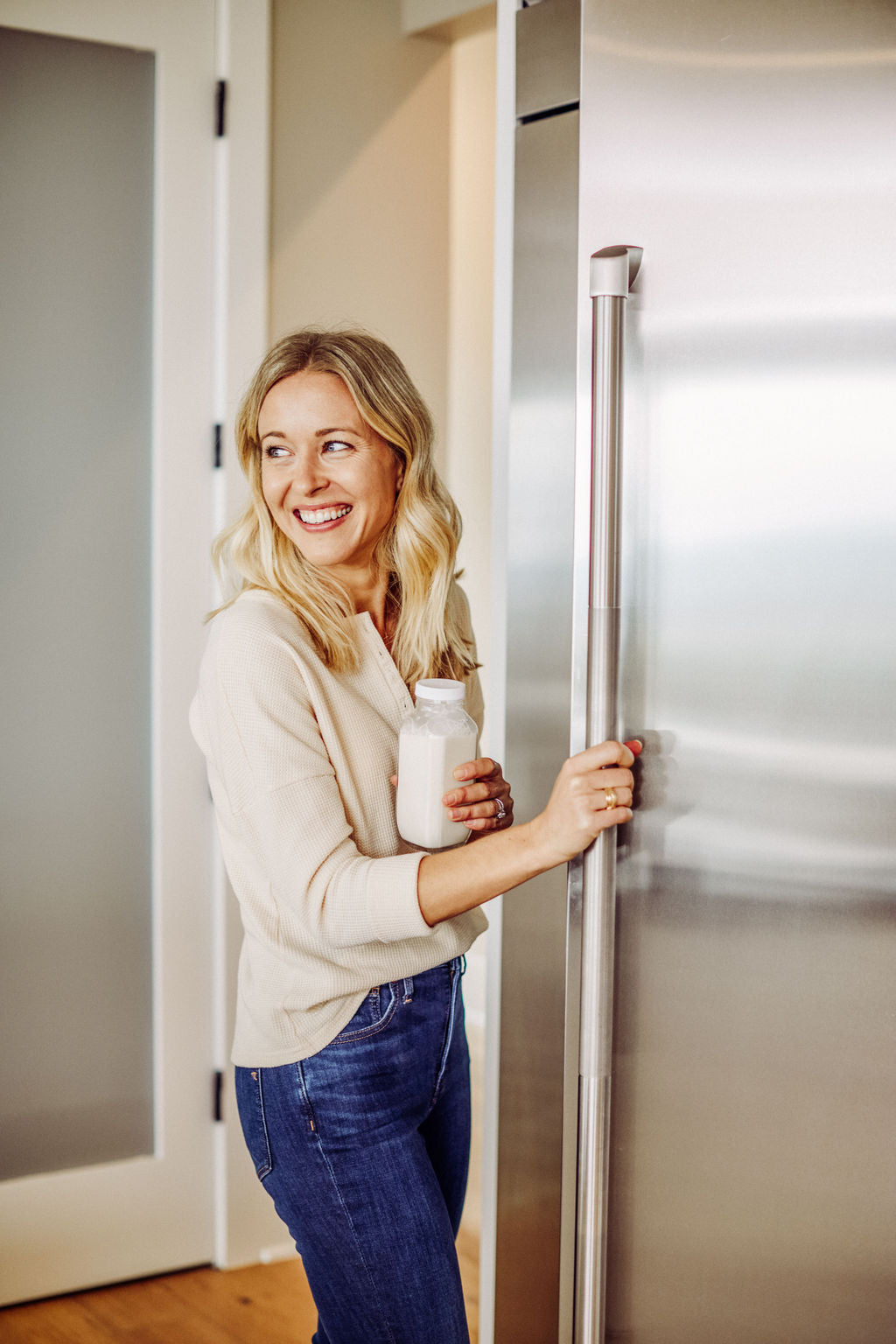How to Choose Healthy and Sustainable Clothing

The “Slow Fashion” or the “Ethical/Sustainable Fashion” movement has become increasingly popular in recent years.
This movement was created in response to ‘Fast Fashion” which encompasses a variety of ethical and environmental issues.
Some of these include inhumane labor practices, textile pollution (which accounts for 8.1% of the world’s greenhouse gases1), unfair trade practices, chemical exposure, and excessive water use.
However, the problems with fast fashion aren’t limited to issues stated above. The lesser known truth is how textile toxins directly impact our health.
One example is children's pajamas made with synthetic polyester treated with flame retardant chemicals.
Flame retardants have been proven carcinogenic and are designed to stay on the fabric indefinitely2. This exposes the child to a significant amount of toxic chemicals during sleep, a time when the body’s supposed to be restoring and repairing itself.
We believe everyone deserves clothing that is healthy for people and the environment!
Fortunately, the slow fashion movement is making healthier garments more accessible and affordable than ever. Making the switch only requires awareness, a bit of new knowledge, and an optional openness to a less is more concept…much like switching to healthier food!
5 Most Common Toxins Hiding in Clothing
The list below contains some of the toxic chemicals found in garments that have a negative impact on human health. It is by no means an exhaustive list since the number of possible chemicals is extensive.
- Flame retardants: These chemicals are known to be carcinogenic3, and also disrupt the brain, thyroid, reproductive system, and entire endocrine system4. They are often found in baby or children’s sleepwear and bathrobes.
- Formaldehyde: A “complete carcinogen” that affects cancer at every stage5. It also can exacerbate asthma, cause skin irritation, and negatively affects the nose, eyes, and throat6. It is present in wrinkle-free, wrinkle-resistant, anti-static, or “easy care” garments. Even after multiple washes, it has been shown that the formaldehyde stays present in these items.
- Waterproofing and stain-resistant chemicals: Considered “forever chemicals,” these contain a toxic class of chemicals called per- and polyfluoroalkyl substances (PFAS). These have been linked to ADHD, infertility, increase in bad cholesterol levels, preeclampsia, birth defects, heart disease, cancers, and developmental issues in children7, 8. Most commonly found in outdoor gear, leather, GoreTex, synthetic clothing, and anything labeled “stain resistant.”
- Phthalates: Chemicals typically found in plastics and synthetic clothing including sportswear, outdoor gear, jeans, and more. Phthalates have been associated with cancers, obesity, endocrine and reproductive issues9. They have been found to persist on clothing after washing10.
- Plastics: Polyester, nylon, acrylic, and polyamide are essentially plastic in fabric form. They pose hazards due to chemicals used during production and microfibers from the fabrics releasing while laundering, contaminating our water sources. This means we could end up ingesting plastics through our drinking water.
7 Simple Ways to Avoid Synthetic Chemicals in Clothes
#1: Choose fabrics made from natural fibers
The safest fabrics are made from 100% natural materials. This includes:
- Cotton
- Hemp
- Silk
- Linen
- Bamboo
- Cashmere
- Wool
However, natural fabrics can still be made from highly-sprayed crops, which require a ton of water, pesticides, herbicides, and fungicides to produce.
The simple solution to this is to buy organic fabrics when you can. For wool and cashmere specifically, you’ll want to look into the brands’ sustainability practices, as the eco-friendliness of these materials can vary.
Check out our recommendations in the next section for our favorite brands (and how to find them at a bargain).
#2 Sun new clothes
The best way to reduce chemicals in clothes is to sun them before washing. Put the item in the sun until you can no longer detect that “new clothes smell”. Make sure you also turn clothing inside out and bring in at night to avoid the morning dew. Sunning is especially helpful for clothing made of synthetic material.
#3 Wash new clothes before wearing
This simple practice can remove a ton of chemicals, toxin-harboring dust, and disperse dyes which is commonly used in synthetic fabrics and is linked to contact dermatitis11. Most experts recommend washing new clothes at least 2-3 times, in the warmest water the fabric will permit, before wearing. Some garments will also benefit from a few good hot runs through the dryer.
#4 Wash your clothes in human-safe laundry soap
If you’re going to put in the extra effort to avoid chemicals in clothes, be sure to avoid conventional laundry detergents, fabric softeners and dryer sheets! Branch Basics Concentrate can be diluted with water and made into a laundry soap that’s fragrance-free, human-safe, biodegradable, and super effective. We also offer Oxygen Boost to help brighten clothes and remove stains and 100% American Wool Dryer Balls to dryer sheets.
View our Laundry Kit here and learn more about how to choose safer laundry soap in: How to Toss Your Toxic Laundry Detergent.
#5 Buy used clothing
Buying used clothing is a fun and affordable way to reduce environmental pollution and human chemical exposure. To produce a new garment, a significant quantity of natural resources are needed. For example, it takes hundreds of gallons of water to produce a single pair of jeans!
Used clothing has had time to outgas their factory chemicals that could potentially harm your health. They also often cost less, allowing you to buy higher quality items.
Check out: How to Remove Fragrance from Used Clothes and Hand-me-downs for tips on detoxing chemical detergent residues from your vintage finds.
#6 Wash synthetic clothes wisely
Most of us already have some synthetic clothes and/or may choose to wear some for active or outdoor gear. In these instances, we recommend Guppy Friend wash bags to reduce the amount of micro-plastic shedding that takes place during laundering.
#7 Adopt a less is more approach to fashion
While it can be tempting to stay “with the trend” and buy a new wardrobe every season, scaling back on impulse buys is a very effective way to reduce our clothing footprint. Try creating a capsule wardrobe! Pair down your clothing to a few essential favorites then augment them with seasonal touches and accessories. Also, being mindful about buying quality items and taking proper care of your clothing will help all your clothes last longer.
Joshua Becker of Becoming Minimalist has a great article on how to pair down your wardrobe here.
Our Favorite Healthy Clothing Brands
- Pact Organics
- Mate the Label
- Hart + Land
- Boody Wear (sustainable bamboo)
- Patagonia (for recycled cashmere and organic options)
- EcoVibe
- People Tree
- Organic Basics
- Everlane
- Hannah Anderson (for high-quality cotton and organic cotton baby/kid’s pajamas)
- Kindred Bravely (for organic cotton and bamboo maternity and nursing bras
- H&M Organics (we buy a lot of baby/kid items from here)
Most of these sites have great sales and offer a discount on your first order. We also like using sites like PoshMark and ThredUp to find great deals on quality used organic clothing (just type in “organic” or the specific brand to search).
For more organic cotton brand suggestions for baby, check out: “Our Non-Toxic Baby Registry”.
Small Changes Make a Big Impact
It can be a little upsetting to learn that the clothes you’ve been wearing and LOVING for years aren’t so healthy for you or the planet.
However, with what you’ve just learned you have everything you need to start making small changes like the ones listed above.
Our best advice is to choose one or two action items to start then continue your journey from there. Over time, this will make a big impact!
What brands of eco-friendly clothing do you love? What’s helped you adopt a “slower” approach to fashion?
- https://quantis-intl.com/wp-content/uploads/2018/03/measuringfashion_globalimpactstudy_full-report_quantis_cwf_2018a.pdf
- https://www.sciencedirect.com/science/article/abs/pii/S0045653513017293
- https://www.sciencedirect.com/science/article/abs/pii/S0045653513017293
- https://www.niehs.nih.gov/health/topics/agents/flame_retardants/index.cfm
- https://www.osha.gov/laws-regs/regulations/standardnumber/1910/1910.1048AppC
- https://www.gao.gov/new.items/d10875.pdf
- https://www.ncbi.nlm.nih.gov/pmc/articles/PMC3855507/
- https://www.ncceh.ca/sites/default/files/Health_effects_PFCs_Oct_2010.pdf
- https://toxtown.nlm.nih.gov/chemicals-and-contaminants/phthalates
- https://pubmed.ncbi.nlm.nih.gov/27007912/
- https://onlinelibrary.wiley.com/doi/full/10.1111/cod.12001
Categories

Allison Evans
Allison has dedicated herself to helping others reap the benefits of clean living. She, along with her husband and two daughters left Houston for the country life as she heals from a recent mold exposure and diagnosis of chronic Lyme disease. Follow her story on our Instagram and read more about her Journey to Fertility.







